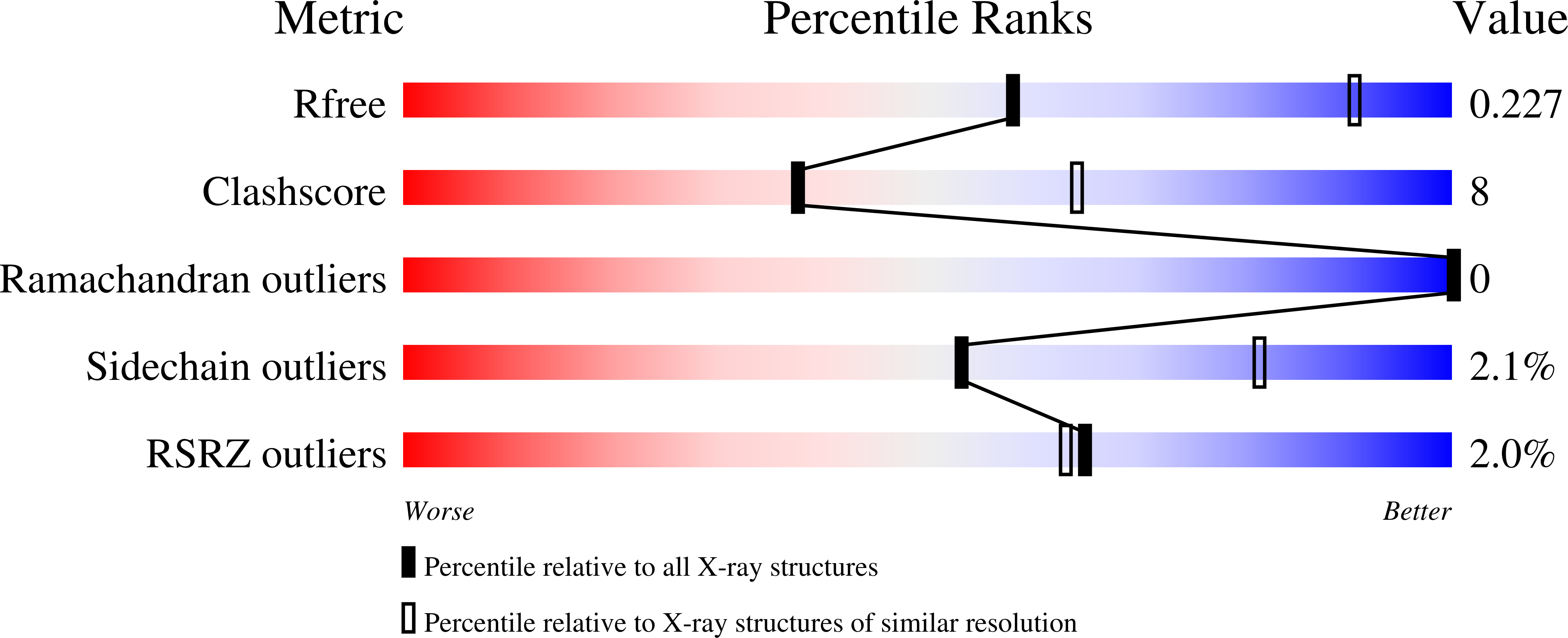Kinetic proofreading of lipochitooligosaccharides determines signal activation of symbiotic plant receptors.
Gysel, K., Laursen, M., Thygesen, M.B., Lironi, D., Bozsoki, Z., Hjuler, C.T., Maolanon, N.N., Cheng, J., Bjork, P.K., Vinther, M., Madsen, L.H., Rubsam, H., Muszynski, A., Ghodrati, A., Azadi, P., Sullivan, J.T., Ronson, C.W., Jensen, K.J., Blaise, M., Radutoiu, S., Stougaard, J., Andersen, K.R.(2021) Proc Natl Acad Sci U S A 118
- PubMed: 34716271
- DOI: https://doi.org/10.1073/pnas.2111031118
- Primary Citation of Related Structures:
7AU7, 7BAX - PubMed Abstract:
Plants and animals use cell surface receptors to sense and interpret environmental signals. In legume symbiosis with nitrogen-fixing bacteria, the specific recognition of bacterial lipochitooligosaccharide (LCO) signals by single-pass transmembrane receptor kinases determines compatibility. Here, we determine the structural basis for LCO perception from the crystal structures of two lysin motif receptor ectodomains and identify a hydrophobic patch in the binding site essential for LCO recognition and symbiotic function. We show that the receptor monitors the composition of the amphiphilic LCO molecules and uses kinetic proofreading to control receptor activation and signaling specificity. We demonstrate engineering of the LCO binding site to fine-tune ligand selectivity and correct binding kinetics required for activation of symbiotic signaling in plants. Finally, the hydrophobic patch is found to be a conserved structural signature in this class of LCO receptors across legumes that can be used for in silico predictions. Our results provide insights into the mechanism of cell-surface receptor activation by kinetic proofreading of ligands and highlight the potential in receptor engineering to capture benefits in plant-microbe interactions.
Organizational Affiliation:
Department of Molecular Biology and Genetics, Aarhus University 8000 Aarhus C, Denmark.















